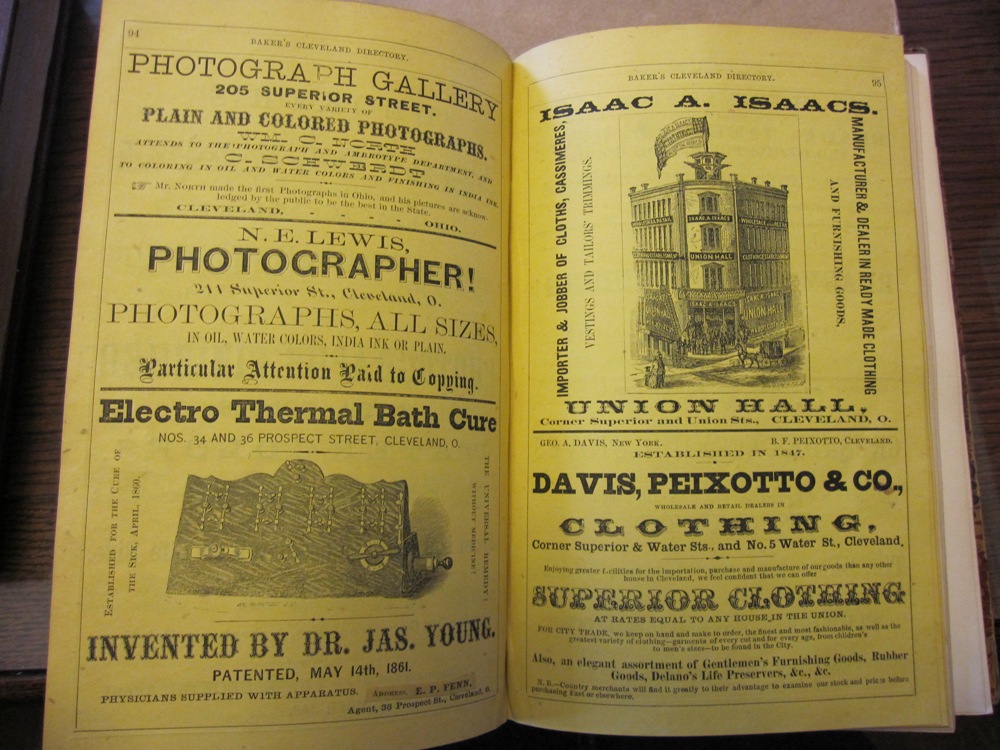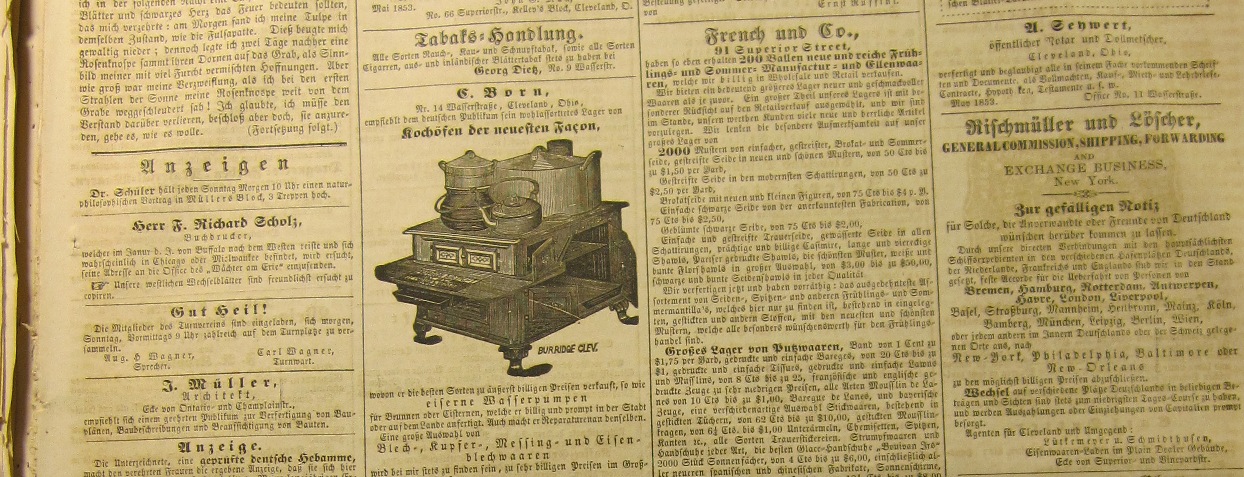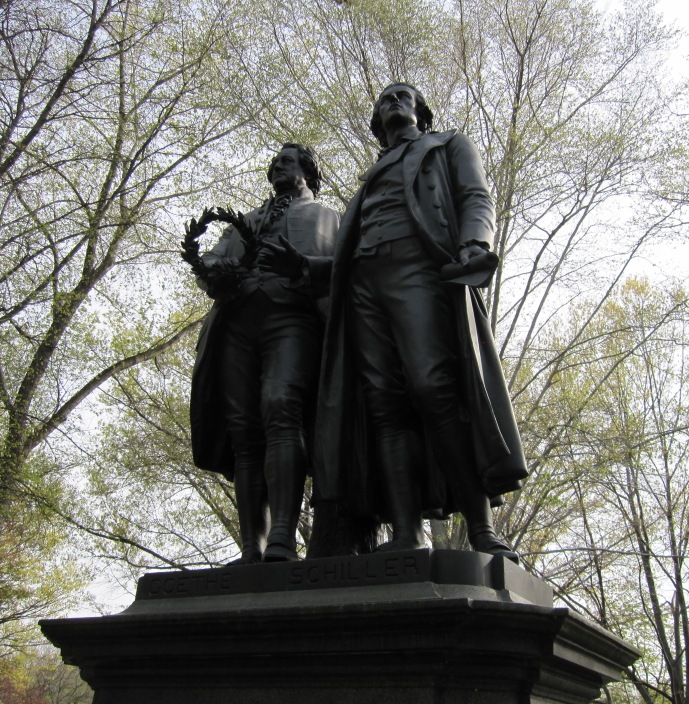Really, there is such a web site. FindAGrave.com. Unfortunately, I’m able to locate exactly none of the people I’m searching for in the nineteenth century. Perhaps it’s due to misspellings?
I located the marriage record today for Michael Harm and his bride Elizabeth Crolly at the Cuyahoga County Records. The minister who officiated had an illegible signature. He misspelled the bride’s surname as Crowley. But that’s only fair, since the ministers name, which reads “Wilhelm Schmied” as best I can make out, is spelled “William Schmid” in the directory of pastors.
But my best resource of the day turned out to be none other than the phone book. I’m joking about the phone part — but seriously, the Directory of the City of Cleveland was a wealth of information. It gave addresses, occupations, and business locations. Didn’t list the women, though — a sign of the times that are behind us.
So I couldn’t find the graves, or the dates of death. So what? What matters is how we live.






